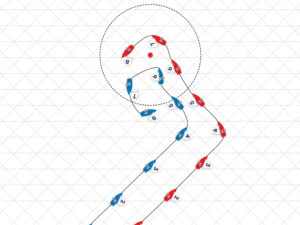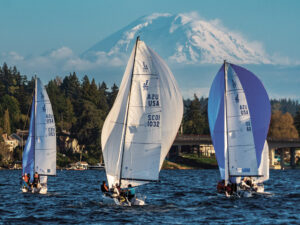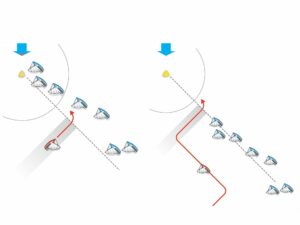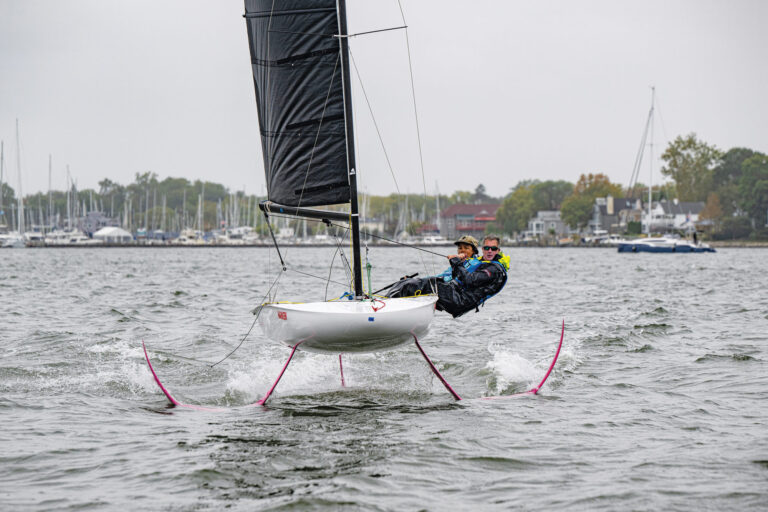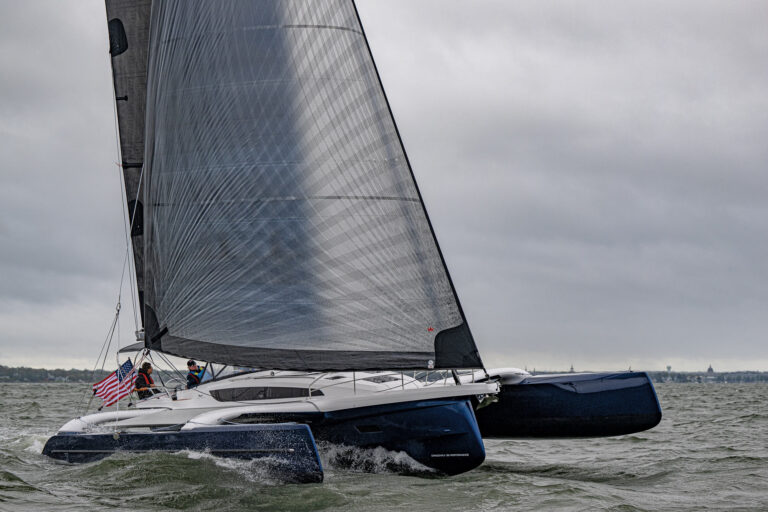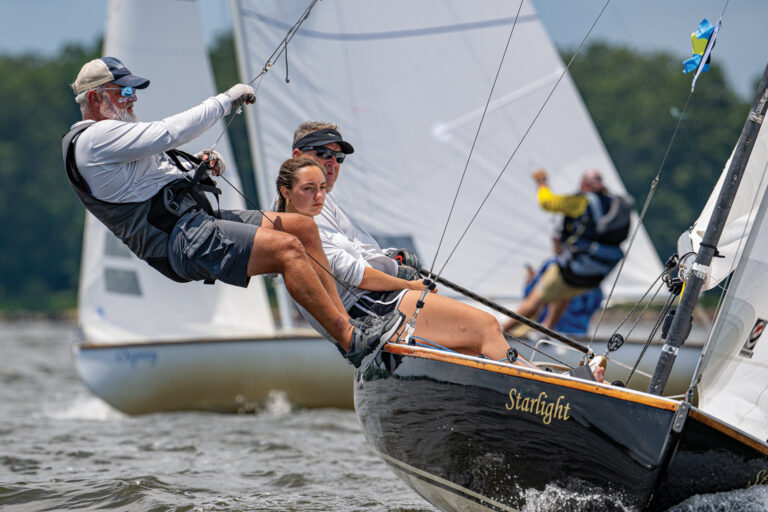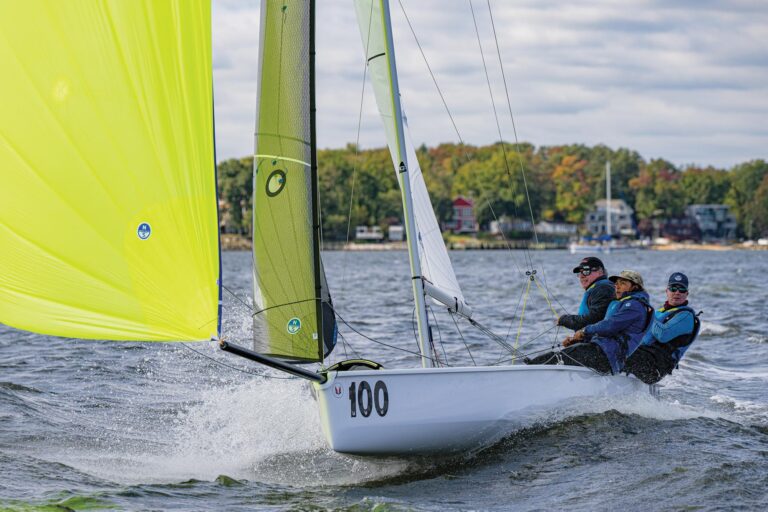Reprinted with permission from www.breymaiersailing.com. For more coverage of the Barcelona World Race, click here. -Ed.
With sailing fans all around the world following the Barcelona World Race tracker and, with the BWR website, becoming armchair meteorologists, it’s easy for those of us competing in the race to forget how lucky we are to be sailing these machines. We’re especially lucky to experience the whole range of conditions onboard during a round-the-world race.
One thing that’s not easily conveyed is what it’s actually like to sail one of these machines. Some questions we get are:
1. How fast do you actually go?
2. What’s the best angle to the wind to get the fastest boatspeed?
3. What sails do you use in what conditions?
4. What conditions qualify as “easy,” “a bit uncomfortable,” and “really rough”?
The short answer to all four questions is: It depends a lot on the wind and waves. Of course, that’s not a very satisfactory response, so I’ll try to expand a little.
How fast do we go? We have what are called “polars” for the boat. This is a data set created first by the naval architect, then refined with data gathered on board during optimum sailing conditions. The polars predict how fast the boat will sail for a given wind strength or angle. We have the data for every degree and every knot of windspeed. You’ll see a simplified table below.

Click image for larger version.
Another way to visualize polars is with a butterfly graph (below), in which wind speed is known, and the boat speed is shown as the “butterfly,” with wind angles read around the outside.
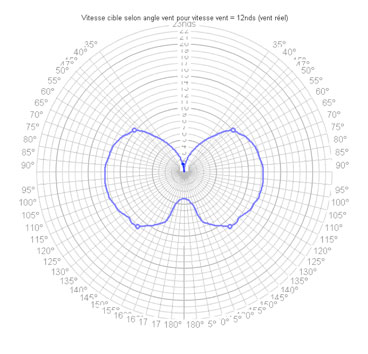
_Click image for larger version.
_
We have a butterfly graph for every windspeed. Hopefully, the first table actually answers the question of how fast we go. Please remember that the table doesn’t take waves into account; in surfing conditions, much higher speeds are possible. So far, the maximum speed I’ve seen on Neutrogena is 33 knots, 28 under pilot.
What is the optimum angle to the wind for the fastest speed? “It really depends on wind speed and waves” is even more true, but a look at the butterfly graph, which is typical of the graph for every wind speed, should give an indication. As you can see, the boat goes the fastest in flat water when the wind is between 90 and 110 degrees true.
Once you take waves into account, certain things change. It’s always better to have waves coming from behind the boat, say 30-40 degrees or closer to the centerline. Usually you only see this wave angle when sailing downwind, but often, if the wind has changed direction but the waves have not yet followed suit, we get a couple of hours where we can bias the course a little to sail more with the waves and increase our best speed. Sometimes, we’ll even have waves from behind that we can surf going upwind. (Once so far this trip.)
As for the wind, in 10 knots, the best angle is 80 degrees from the front. As wind speed increases, the boat still goes fastest with the wind from just aft of the side, say 100 to 110 degrees from the front. This remains true until about 30 knots. After that, it gets too rough, and the waves are coming from the side as well—which is scary, as the boat launches off them. In big breeze, the fastest wind angle is about 130-140 from the front, and safest is about 155 in 35 knots of wind.
Remember that, as winds increase through that range, we change sails six or seven times. The goal is to keep the right amount of sail up. Not too little, and especially not too much. Fortunately for our boat—and us—it usually sails better in strong winds with smaller sails than you’d imagine.
Part of the reason the boat is fastest with wind from the beam is that, when the wind is from more aft, the sails start to blanket one another. The curved shape of the sails creates low pressure in front of each sail and high pressure behind—that’s what makes the boat go, and that’s why the wind angle is so important. When you’re sailing far off the wind, the sails work like a “barn door” held up in the wind, and they’re not as efficient, since they don’t produce the pressure differential like when the wind flows over them.
This brings us to Question 3, Which sails do you use in which conditions? We have a chart (below) that represents all of the sails and graphically depicts the range of wind speeds and wind angles at which we deploy them. This is called the SAILECT chart. Clever name huh?

_Click image for larger version.
_
Here are all the sails and their colors, with a little description:
Full Mainsail: Blue outline, bottom third of graph, 170 Sq. Meters
Mainsail, 1 reef: Dashed green outline, bottom middle of graph, approx. 138 Sq. Meters
Mainsail, 2 reefs: Dashed yellow line, upper middle of graph, approx. 112 Sq. Meters
Mainsail, 3 reefs: Dashed red line, top third of graph, approx 85 Sq Meters
Code 0: Orange, light-wind sail for all angles, 170 Sq. Meters
Genoa: Brown, light to medium air, upwind and reaching, 130 Sq. Meters
Solent: Purple, medium to strong air, upwind and reaching, strong downwind, 87 Sq Meters
Trinquette: Red, heavy air, upwind, reaching, and super strong downwind, 47 Sq. Meters
Storm Jib: Yellow, storm conditions, up or down, rarely used, 29 sq. Meters
Big Spinnaker: Grey, light to medium air, downwind conditions, 425 Sq. Meters
Small Spinnaker: Dark purple, heavy air or bad waves, downwind, 330 Sq. Meters
Big gennaker: Pink, broad reaching and heavy air, downwind, 270 Sq. Meters
Small gennaker: Green, 110-130 degrees reaching, very heavy downwind, 180 Sq meters
Staysail: Blue overlapping area, using the Solent or trinquette at the same time as another sail on the bowsprit to gain speed, usually the big spinnaker or one of the gennakers.
The wave conditions influence the choice of sails. In big waves downwind, it’s usually necessary to change to a smaller spinnaker or gennaker earlier. In order to prevent nosediving when reaching in wavy conditions, the reef is often taken sooner, as it reduces the height of the sail plan.
**
What conditions are the most comfortable?** Generally, any time the water is flat, life on board is pleasant, no matter how strong the wind. As the wind and waves build, it is progressively more comfortable on board the farther aft the wind goes. Upwind and reaching are a tedium of slamming into waves, ranging from gunshot sounds upwind to banging together two trash can lids while reaching. Until about 22 knots that is. After that, life becomes increasingly violent, and the boat’s always heeling at least 15 degrees. It becomes necessary to pay attention to your movements, especially down below, where there are plenty of things to fall on. Outside, above 22 knots, there are always waves and water on deck and in the cockpit, meaning foul-weather gear no matter how hot, unless you are planning on just staying wet, in which case the apparent wind quickly has you quite cold. Upwind is bang bang bang like a war, and as soon as you’re reaching, you’re going so fast that it’s like being on a runaway train—one that’s constantly falling over cliffs but never crashing. It is super stressful on the nerves, wondering if you will get into the trough of a particularly big wave and nosedive.
Storm conditions on a boat like this are brutal. In winds over 40 knots, it’s more or less impossible to go upwind, certainly not advisable. The risk of breaking the boat or your nerves is quite high, and the accelerations and decelerations in waves are like a car accident. Even downwind, over 38 knots, you’ve reached terminal velocity, and the boat buries into most of the waves. It’s almost impossible to slow down. Even with three reefs and a storm jib, in 40 to 45 knots of breeze, it’s possible to be pushed to 25-28 knots of speed quite easily.
I hope this helps to provide a more technical description of why we use certain sails, when, and how we choose them. Maybe now watching the videos, or looking at the routes we sail through the various weather scenarios, will make more sense. Feel free to ask any questions you may have by emailing the website (www.breymaiersailing.com).

